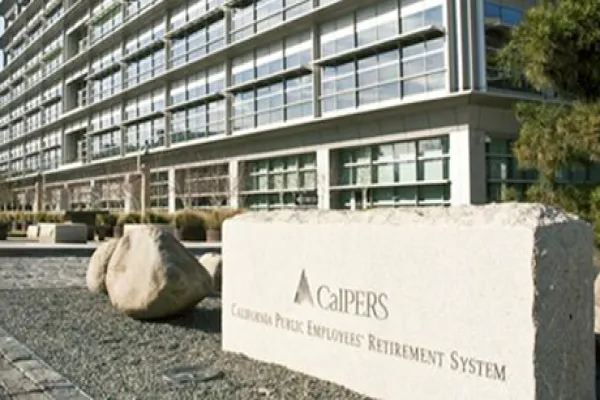While Ben Franklin’s saying that “nothing is certain except death and taxes” may be true, it’s unhelpful in actually working out all of the options and uncertainties that people face when considering investments and diversifying their portfolios. One of these uncertainties comes in the form of hedge funds and the impact they may have on your tax season.
Many presentations for hedge funds or funds of funds are impressive. What most fail to point out, though, is that allocations to hedge funds frequently generate large short-term gains, which carry taxes that can exceed 50 percent in some states, including California. I specifically mention California not only for its high concentration of ultrahigh-net-worth (having at least $30 million in assets) individuals but also because it is the home of the Aperio Group, an investment management firm that focuses on the very wealthy.
In a white paper titled “What Would Yale Do If It Were Taxable?,” Aperio collected endowment asset allocations and asset-class returns, volatility and correlation data from third-party sources, including Yale’s annual report — the university is known for its top-performing endowment — and an independent study of endowments by Commonfund and the National Association of College and University Business Officers (NACUBO).
Aperio took the data and calculated pretax and aftertax returns for Yale’s asset classes. Then, using an allocation optimizer, the firm generated a tax-adjusted optimal asset allocation — evaluating what the institution might do differently if its assets were taxable (see chart).
Pre-Tax (P/T and After-Tax (A/T) Returns and Weights for Yale (low correlation HF index)
Source: Aperio Group, LLC, based on data for the period December 31, 1998 through June 30, 2013.
After factoring in taxes, what do the Aperio models recommend allocating to absolute return — a term the company uses as a proxy for hedge funds? The answer: nothing.
Describing the impact of its hypothetical Yale endowment being shifted to a taxable environment, Aperio notes the following: “Given that an investor now has to pay taxes on what had been a tax-exempt portfolio, suddenly active equity and absolute return [hedge fund] allocations become far less attractive.”
Aperio reaches this conclusion even assuming that hedge fund strategies would otherwise benefit the portfolio by offering diversification through a low correlation to equities. In fact, many hedge funds, such as long-short strategies, have a relatively high correlation to equities. For example, the HFRI Fund Weighted Composite hedge fund index has a 0.88 correlation to equities. This makes the case for using them for diversification even less attractive. As Aperio concludes: “If a hedge fund strategy reflects the risk patterns of the HFRI index, with its higher correlation to equities, then the model never allocates anything to hedge funds.”
Beyond the caution of Yale chief investment officer David Swensen and Aperio’s analysis, I’ve been surprised at the dearth of publicly available research on the impact of taxes on hedge fund returns.
Admittedly, coming up with metrics to evaluate returns and annual taxable-gain assumptions across a range of hedge funds is difficult, owing to limited transparency on returns, turnover and the mix of long-term versus short-term taxable gains. I don’t think it’s a stretch, though, to echo John Rekenthaler, vice president of research at Morningstar in Chicago, who wrote in January that “hedge funds are notoriously tax-inefficient” and that a sizable portion of yearly returns comes in the form of short-term taxable gains.
One article of note is a simple piece that Wall Street analyst–turned–media magnate Henry Blodget wrote for Slate called “The Wall Street Self-Defense Manual.” (He later fleshed out the piece into a book of the same name.) Compared with Aperio and its complex analysis, Blodget used straightforward assumptions and calculations to question the appropriateness of hedge funds for individual investors.
Most hedge funds charge a 2 percent annual fee on assets annually plus a 20 percent fee on gains. Blodget assumed that a fund tracking the Standard & Poor’s 500 index charges 0.2 percent on assets (this is quite high: Vanguard charges only 0.05 percent) and generates a net return of 9.8 percent per year — 10 percent gross minus 0.2 percent in fees. He determined that an equity-oriented hedge fund charging 2 and 20 would need to produce a 15 percent gross return to just match the index fund. Looking at funds of funds that charge 1 and 10 on top of the underlying hedge funds’ fees, Blodget found that the return would need to be 18.5 percent.
He then cautioned, “Don’t forget that most [hedge fund investments] come with a healthy dollop of the biggest cost of all: taxes.”
Blodget assumed that after expenses a hedge fund generates annual pretax net gains of 10 percent per year and that 75 percent of those gains come from short-term trading. With a 50 percent total short-term gain and a tax liability of 20 percent on the balance, this would produce an aftertax return of just under 6 percent. A 40 percent haircut.
Ouch.
When you put all the costs together — fees and taxes — you get a sense of just how skilled a hedge fund manager has to be to generate an above-market aftertax return for a taxable investor. Blodget calculated that “to equal the net aftertax return of an S&P 500 fund that generates a 10 percent gross return, a hedge fund would have to generate a gross return of no less than 20 percent. A fund of funds would have to post a gross return of 24 percent.”
If you think Blodget’s math must have been off, Matthew Klein, writing for BloombergView in 2013, highlighted comparable research from Greenline Partners, staffed by folks who once worked at hedge fund firm Bridgewater Associates. Greenline determined that hedge fund investors, on average, keep only about 40 percent of gross returns after fees and taxes. Of the Greenline research, Klein wrote, “To get an equivalent return after taxes and fees [to that of a low-cost index fund that tracked the S&P 500], an investor would have to find a hedge fund that consistently earned almost 21 percent a year.”
Of course, some hedge fund managers are outliers and have produced attractive aftertax returns. But evidence like the Aperio study and Blodget’s calculations make me question the use of most hedge funds in the majority of ultrahigh-net-worth portfolios.
As my friend Greg Rogers, president and founder of RayLign Advisory, a wealth management firm in Greenwich, Connecticut, noted, “What keeps me up at night is overly compensating my portfolio manager friends for performance fees, Wall Street managing directors for trading fees and government coffers.”
Of hedge funds of funds or endowment-in-a-box-style limited partnerships, Greg added, “The investor is asking heroic results from manager selection, strategy allocation and the hedge fund managers themselves — all three competencies have proven to have limited sustainability over extended periods of time, to say the least.”
So the next time you hear the hedge fund or fund-of-funds endowment model pitch, or the suggestion that fiduciary prudence demands that you consider an allocation to hedge funds, step back and think of old Ben Franklin and the certainty of the meeting you have this time of year with the tax man.
Preston McSwain is a managing partner and founder of Fiduciary Wealth Partners, a registered investment adviser in Boston.
Get more on registered investment advisers.






